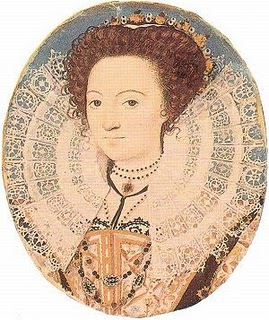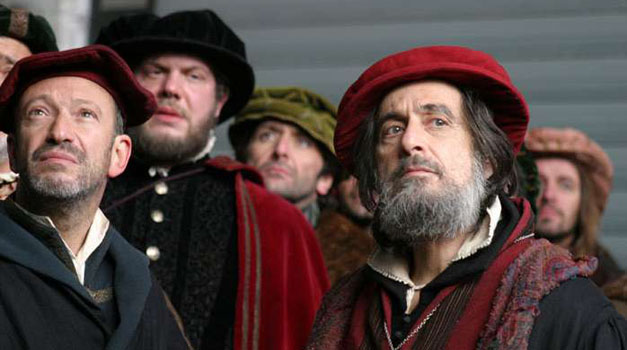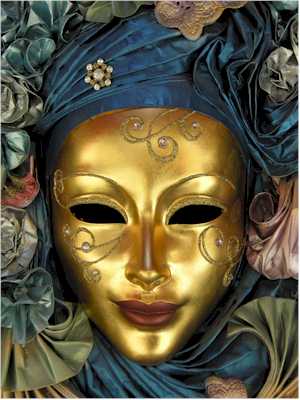Ghost writing in Stratford-Upon-Avon. Why would a man whose works portray well-educated, proto-feminist women raise his own daughter as illiterates as Shakespeare did? Amelia Bassano, on the other hand, made feminist history when she became the first English woman to publish a book of original poetry- the 3,000 line “Salve Deus Rex Judaeorum” ( Hail God, King of the Jews) , a satire sometimes known as “Eves’s Apology,” published in 1611.

But if Bassano is the playwright, how could she, as a conversa, have authored Merchant of Venice, which is widely perceived as anti-Semitic? Hudson and other scholars maintain that Merchant of Venice is not an anti-Semitic slander, but an extraordinary appeal for equality. The protagonist Shylock pleaded that he be accorded basic rights as a human being and that Jews be seen as subject to the same passions, diseases, organs, dimensions, and affections as Christians.
In 1979, British historian A.L. Rowse advanced the then controversial theory that Amelia Bassano, with her Mediterranean skin coloring, was the famous “dark lady” of the Shakespeare sonnets, arguing that the woman’s physical characteristics, musical talent, tyrannical and temperamental character, age, marital status, and promiscuous nature—all described in the sonnets—match the known facts about Bassano more closely than those of any other woman of her time and place.paper proposes a new approach to attribution studies, suggesting the poet Aemelia Bassano Lanier (hereafter Amelia) as a new candidate for the
primary authorship of Shakespeare’s works.

With its contentious gender politics, Shakespeare's The Taming Of The Shrew has long been regarded as a problem play. Are women more successful at impersonating men on stage than are men at taking on female roles? I admit to being sceptical before witnessing Marion Potts’ delightful all-female version of Bell Shakespeare’s Taming of the Shrew, -Jenny Blain
In addition to Rowse, Stephanie Hopkins Hughes and Martin Green have already linked her to the so-called ‘dark lady’ of theSon-
nets. The new evidence is essentially literary, with supporting strands of circumstantial and historical material. Certainly,Bassano appeares to be a major experimental poet, her literary ‘signatures’ on the plays, and her access to social networks that match the
main areas of knowledge displayed by the playwright.
“Aemilia Lanyer’s preface to Salve Deus Rex Judaeorum (Hail, God, King of the Jews) includes a piece entitled “To the Virtuous Reader.” The radical theology and politics that are found in this prefatory writing , indeed throughout Salve Deus Rex Judaeorum is an example of what may be referred to as proto-feminist. Lanyer’s representation of how women should be viewed clashed with most of the society of her time. Salve Deus Rex Judaeorum was originally published in 1611 when Lanyer was forty-two and most of society viewed women in a negative light. It was shortly thereafter, in 1615, that Joseph Swetnam published _An Arraignment of Lewd, Idle, Froward, and Unconstant Woman_, a piece meant to be harshly humorous, that reflected a number of society’s negative views on women. With the majority of writings of this time exemplifying a misogynistic portrayal of women, Salve Deus Rex Judaeorum was quite an enormous leap in the direction of feminism.”
But no evidence demonstrates that he actually wrote the plays. The playwright Ben Jonson wrote in his diary that although Shakespeare passed manuscripts of plays to the actors, who in their “ignorance” admired Shakespeare for providing clean unblotted copies, he was to be “most faulted” for telling them that the copies were his original drafts.If Shakespeare did not write the plays, then who did?

"The figure of Amelia Bassano Lanyer had turned up before in Shakespearean scholarship. In 1973, celebrated historian A.L. Rowse identified her as the actual “Dark Lady” of Shakespeare’s famed sonnets. Bassano — known as the first woman in England to have published a book of original poetry (Salve Deus Rex Judaeorum, 1611), which has been interpreted as an early feminist critique of the Christian Gospels — was part of a family of Italian court musicians of Moroccan/Semitic ancestry who lived as clandestine Jews. Hudson explains that the unusual circumstances of Amelia’s upbringing accounted for her extraordinary education and literary sensitivity. By age seven, she was adopted by the Countess of Kent, who provided her with a well-rounded education, including studies in Greek, Latin, and the Bible. By 13, she became mistress to Lord Henry Hunsdon, the man in charge of the English theater and patron of the Lord Chamberlain’s Men — the company that performed Shakespeare’s works."
Known today as the first woman in England to publish a book of original poetry, Amelia Bassano was born in 1569 into a family of secret Jews (known as Marranos or Conversos) living in London. They shared their household with some of their cousins, the Lupos, who had been imprisoned as Marranos under Henry VIII . The patriarch of the family, violinist Ambrose Lupo, who was otherwise known as ‘Ambrosius deomaleyex’, a Latin version of the Sephardic dynasty ‘de Almaliach’, was certainly ‘in origin an Iberian Jew’ . However to outsiders, the Bassanos probably appeared indistinguishable from ardent Puritans who followed Mosaic Law. Brought to London from Venice in 1538/9, the dark-skinned Bassanos, some of whom were described in contemporary records as ‘black’ and who may have been of Moroccan as well as Jewish ancestry, became established as the Court
recorder troupe.

Daniela Amini:But most important, Hudson discovered her key “literary signatures” — in which Amelia left her name spread across various plays. Her married name Lanier — meaning falcon in French — is spread across the two different versions of The Taming of the Shrew. It is in the form of the central figure who is tamed like a falcon, together with her name Emila; her father’s name, Baptista, and her husband’s name, Alphonso. An Emillius and a Bassianus appear in Titus Andronicus as well. But the most important “signatures” are those created after her husband’s death, between 1622-23, when her full maiden name — Aemilia Johnson Willough(by) Bassanio — was spread across three Shakespearean plays, associated in each case with the standard image of the Renaissance poet. Such a circumstance had little chance of being a mere coincidence. “She so badly wanted us to notice them,” says Hudson, “but nobody ever did.”
The verifiable facts of Shakespeare’s life are few. He acted in two of Ben Jonson’s plays, owned shares of the Globe Theatre and the Blackfriars, sued people for petty sums, and bought land in Stratford. How, asked distinguished British actors Derek Jacobi and Mark Rylance in their 2007 “declaration of reasonable doubt” (signed online by some 1,700 people), did this Shakespeare acquire his knowledge of foreign languages, which the plays’ author clearly demonstrates? Where did he develop, seemingly overnight, dramatic mastery of the Elizabethan w
s of law, the court, mathematics, heraldry, medicine, horticulture, falconry, astronomy, and the military, to which he had no known exposure? Why did he leave a last will and testament that made no mention of anything he wrote? Why is there no contemporaneous evidence of his actual authorship? As Jacobi and Rylance note in their declaration: “Not one play, not one poem, not one letter in Mr. Shakspere’s [their spelling] own hand has ever been found….”

Michael Posner:Michael Egan, who has taught English literature at universities in England and America and written extensively on Shakespeare, has explained to author Andrée Brooks (see “Secret Jews in Shakespeare's London”) that the playwright’s understanding of the Jewish predicament—the torment of being reviled and persecuted—suggests that the writer had spent considerable time with Jews. Shylock’s reflection on anti-Semitism—“Still have I borne it with a patient shrug/For suff’rance is the badge of all our tribe”—was, Egan believes, “unlikely to have been learned from a book.”
During her many years of being kept in ‘great pomp’ as Lord Hunsdon’s mistress, Amelia had an unrivalled opportunity to learn about the theater and Court entertainments. However, once she left Court in 1592, her husband wasted her money, she lacked any honors, not even the title ‘Lady.’ To relieve their financial distress, her husband turned to the Earl of Southampton, Amelia’s former next-door neighbor, who advocated on his behalf in 1604 supporting his request for a patent.The Rape of Lucrece and Venus and Adonis were affectionately dedi cated to Southampton, but this is the only personally documented link between the Earl and a proposed authorship candidate.
Also, Ben Jonson is the only literary figure who claimed to know the author of the plays, and his remarks are somewhat ambiguous—including the reference ‘To the Memory of My Beloved the Author’ in the First Folio which, in an oddly chosen metaphor, compares the author to a ‘matron.’ Although there is no direct proof that Johnson knew Amelia personally, he certainly knew her poem on Cooke-ham because it influenced his own country-house poem.
Unlike most other authorship candidates, Amelia has a substantial body of published verse. Ilya Gililov described the author of the Salve Deus collection as ‘a paradoxical person, a gifted poet, erudite and intellectual, whose ideas were often ahead of her time, a person who deserved the high honor of being a literary coequal of Shakespeare!’ He even claimed that ‘Many of the stanzas may be regarded as among the highest attainments of 17th-century poetry in England’ (Gililov )
The entire Salve Deus collection amounts to a substantial literary work, around 3,000 lines. Looked at closely, and compared to Shakespeare’sworks, there are suggestive similarities of literary style, vocabulary, imagery, verse form, theol- ogy, composition, sources, dramatic devices, and use of innovation. The Cooke-ham poem, which concludes the volume, has explicit stylistic re-
semblances to Shakespeare which it is possible to pin down with relative certainty.

Modern critics/idolaters (like H. Bloom) claim that there was never such a thing as an "individual personality" or "independent mind" until Shakespeare showed us how to be one and to have one. Nietzsche is also famous for theorizing that the inherent conflict in Western civilization arises from an antique clash between two major human impulses: the Apollonian and the Dionysian. (Apollo guides order, organization, rules, rationality, and power. Dionysus guides inspiration, insobriety, dance, theater, the miracle of the unexpected.) By Nietzsche's own model, Bacon is clearly Apollonian and Shakespeare Dionysian, what with Falstaff, and Puck, and all those bawdy songs.
Addressed to the God of the Jews, the epic poem is a satirical and critical adaptation of the Gospels, focusing on the Passion. Boyd Berry emphasizes that the main poem opens and closes with ‘a sense of mischief, perhaps of satire’, and that the style of digression resembles the ‘dilation’ that has been foundto characterize Shakespeare’s plays, according to Hudson. It also reflects a scholarly compositional process similar to that of the plays and is so complex and layered that it has been described as being as “‘intractable as Shakespeare”.
In terms of literary composition, Salve Deus is also similar to Shakespeare’s works in incorporating fictional passages, and characters, into the source material. For instance, the key passages from the gospel of Matthew are incorporated into a
narrative of women, and new imaginary passages about Pilate’s wife and an angel are added in. Also like Shakespeare’s works, the Biblical source that is most used in Salve Deus is the Gospel of Matthew.Regarding other sources, the Salve Deus prefaces assume a community of noble women similar to the writings of Christine de Pisan. Pisan’s work does not seem to have been referred to by any other writer during the English Renaissance, except Shakespeare.

"Some commentators on the play treat the theme of cross dressing as the paramount theme of the play. Indeed the ads for this whole summer’s Shakespeare in the Park stress Cross Dressing: the other play this summer being Twelfth Night, in which Viola (played by Anne Hathaway) dresses as a man. (Note: Viola dresses as a man to be safe going around in a strange country by herself (aka himself). It was, of course, convenient for Shakespeare to have women dressed as young men, since they were, in fact, being played by young men.)"
Musicical references have also been puzzling. Shakespeare uses three hundred technical musical terms throughout the plays, referring both to music theory and to musical technique. Many take the form of musicians’ jokes that would be appreciated only by other musicians. Altogether there are nearly 2,000 musical references in the plays, including references to one hundred songs. The average Shakespearean play contains three times more musical references than the average play by other writers
Shakespeare’s Italian connection is equally enigmatic given his ostensible lack of education. The plays not only quote Italian in several places, they show a detailed knowledge of Italian geography, clothes, household objects, art and architecture, especially of Venice, Mantua and Padua. While many of these details could have been found in books, the author also knew about the unpublished teachings of professors in the medical school in Padua. The playwright also read Dante, Tasso, Cinthio and other sources in Italian, and was sufficiently fluent to make complex Italian puns. It is also notable that the plays do not use the Italian stereotypes usually found in English literature of the period.

da Vinci. Poner: ... for Amelia Bassano, there is: her 15 closest relatives—father, husband, uncles, brothers-in-law—were professional court musicians, members of the Queen’s recorder troupe, which performed regularly at plays and masques. Her maternal cousin, lutenist Robert Johnson, was the most popular musical composer for the plays attributed to Shakespeare, which typically included half a dozen songs, such as “Where the Bee Sucks There Sucks I” and “Full Fathom Five Thy Father Lies” (both composed by Johnson for The Tempest).
That the author should have come from the Bassano family, Venetian Jews who wrote letters to the Queen in Italian and cursed soldiers in that language on the street, fits the Italian background in the plays. Moreover, the playwright’s shift from writing history plays to writing Italian marriage comedies, around the end of 1592, was precisely when Amelia had to leave Court and set up a married household with her first cousin, a French-Italian Protestant.
Finally, the extensive representation of falconry. Although some knowledge of falconry was widespread among those involved in
hunting, the plays show unusual expertise. They show a detailed knowledge of falconry, using technical language about the way to raise and manage the birds, their health, their flight patterns, their slang names, and even how to repair a broken feather. The author also seems to have a special interest in falcons. Having lived with the Royal Falconer for a decade provides a precise background fit, as is Amelia’s married name, Lanier, which is the French for falcon.
ADDENDUM:
Nobody, Hudson notes, has explained why Shakespeare started writing Italian marriage comedies in 1592, just as he was thought to have arrived in London, but it’s a perfect fit for Bassano’s biography. She had left the court to be re-absorbed by her Italian family. Moreover, the following year, three of her Bassano cousins took a nine-month leave from their jobs at court. Hudson suggests that she may have then deposited her young son with his nurse, temporarily left what is known to have been her unhappy marriage to spendthrift husband Alfonso, and joined her cousins in visiting Italy, where they made arrangements for the visit of Lord Willoughby the following year. On this trip, she might have gained the striking familiarity with Italy that the plays display. Almost half of the non-historical canon is set in Italy, and contains detailed descriptions and references that only someone familiar with the country could have written. For example, one of Iago’s speeches in Othello is a virtual description of the entire distinctive fresco painted on a house in the family hometown of Bassano. Whoever wrote the text must have visited the town. Arguably, Shakespeare and some of the other authorial candidates may have visited Italy, but there is no known reason why any of them would have stopped in the town of Bassano. Unlike Venice, Mantua, Verona, Padua, and other bustling Italian cities, Bassano was hardly a major tourist centre.
Further, the playwright had to have known Italian well enough to make elaborate puns, and to have read Dante, Tasso, Cinthio, Bandello, and others in the original language. There’s a reasonable likelihood that Bassano spoke Italian fluently. Surviving letters from her family to Queen Elizabeth were written in Italian, and police records of younger members of the family indicate they spoke it on the streets. Of the rival candidates, only the Earl of Oxford is known to have spoken the language (but his overall claim is weakened by the ostensible date of his death—1604—since Measure for Measure alludes to an account published in a news sheet of 1621).







 COMMENTS
COMMENTS




We discussed this previous. Now I remember. :) There was this discussion in the house during the 60s with my family about her. :) Thanks for bringing this to world attention. She deserves this recognition.
(The mask is really nice.)